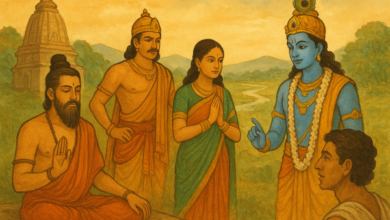‘Children are the future custodians of wild lands’
'Forest man' Nirmal Kulkarni, who has been conducting projects in the North East too, says he wants to focus on children's literature

Nirmal Ulhas Kulkarni is well-known in the nature conservation and research fraternity. Born and brought up in Goa, Kulkarni grew up close to nature. His first snake rescue was at the age of 12. Nature became his passion and he received accolades and recognition as a conservator and rehabilitator at an early age.
Kulkarni may be a man of few words but his actions encompass a wide range of works in the field of wildlife conservation and research. He is a herpetologist, conservationist, wildlife photographer and ecologist. His first book, The Goan Jungle Book, was published in 2013. This time, the ‘forest man’ is back with children’s literature. When asked, Kulkarni, in his mid-forties, said he wanted to focus more on children’s books to inspire future conservationists. In a conversation with Sunday Monitor, Kulkarni speaks about his book, published by Niyogi Books, and his world in the wilderness.
Tell us about the journey behind the book, Eye to I with My First Tiger.
The story is derived from a series of personal experiences I had in the field many years ago while doing camera trap surveys and line transacts in the Nagarhole tiger reserve in Karnataka. I narrated the story to Trisha Niyogi, COO of Niyogi Books, during a chance meeting alongside my wife Assavri Kulkarni. She loved the story and proposed that it should be adapted as a children’s tale. Thus, Eye to I was born.
Why did you choose to write a children’s book?
I have always believed that children are the future custodians and conservationists of our wild lands. Earlier, I would conduct nature talks and presentations in schools, which has gradually shifted to nature walks. I enjoy storytelling in a narrative form as it is engaging and elicits long-term positive responses. Hence, the investment in time and energy in children’s literature.
As a herpetologist, are you not keen on writing about amphibians?
Herpetology is the science of studying reptiles and amphibians. This includes snakes, crocodiles, frogs, lizards, salamanders, newts and caecilians, to name a few. As a herpetologist, I have extensively written on these subjects for a general audience for the past two decades. Hopefully, my next book for children will be on herpetofauna.
In the future, will your target readers be children?
Yes, it is a genre that I am keen to explore to spread awareness about India’s amazing biodiversity.
Awareness through books is one way to involve the young ones in conservation activities. What are the other ways to do this?
Walking in nature is an amazing way to know and appreciate nature closely. Birding is a good hobby to follow from a young age. So is trekking and journaling from nature.
How did you get involved in wildlife expeditions and conservation?
I grew up in a small town called Mapusa in Goa, which is now a large city. It is famous for its Friday Mapusa market. My grandfather, Shantaram Yeshwant Kulkarni, a retired school principal, inculcated in me the love for nature-watching while I accompanied him for his evening walks around Mapusa.
I rescued my first snake, a harmless Whitaker’s Boa, when I was 12 and was soon known as the neighbourhood rescuer. I remember identifying snakes from Rom Whitaker’s black and white book on snakes and JC Daniel’s book on Indian reptiles.
Moving on, as I grew up, I was fortunate enough to transition from being a snake rescuer to an ecologist and eventually a herpetologist, thanks to many mentors, family and colleagues who shaped my journey and continue to do so till today.
I attribute my passion for conservation science to Dr Ulhas Karanth, one of my mentors and India’s foremost large cat expert, who also finds mention in this book and to Romulus Whitaker, another mentor whose work and guidance on reptiles inspires me to do the work I do today.
Have you done any expeditions/programmes in Meghalaya/North East?
Yes, I have been conducting nature appreciation and wildlife tours in North East India, including Arunachal Pradesh, Garo Hills in Meghalaya and Assam for many years now. These focus on nature photography, herpetofauna surveys and wildlife photography.
Do you have plans to organise/design programmes with children in the Northeast?
Yes, I will definitely do so and we are exploring possibilities to do book reading sessions for Eye to I in Guwahati and other cities soon thanks to the amazing team at Niyogi Books.
Recently, there was a report about the random killing of snakes in Assam owing to misinformation through various media. In this context, how can awareness of wildlife/ecology be spread among the masses, especially in the Northeast, where there are vast stretches of forests and hunting is prevalent?
There are a number of grassroots organisations and individuals who are working on the ground in North East India today to spread conservation education and create awareness amongst communities about the rich biodiversity that this region supports and sustains. The media plays an important role too and it is essential that all of us combine hands to reduce hunting pressures, support these local organisations and be proud of the rich natural and cultural heritage of the northeastern region.





